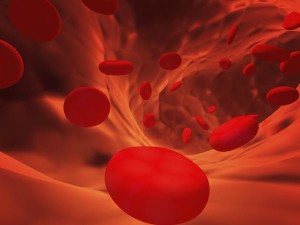Blood transfusion is the process of receiving blood products intravenously into one’s circulation. Transfusions are mainly used for various medical diseases to replace lost components of the blood. In the early days, whole blood used to be transfused, but now in modern medical practice only components of the blood, such as white blood cells, red blood cells, plasma, platelets and clotting factors are used.
Blood transfusion has been a continuous possible source of disease transmission. Innumerable agents are potentially transmitted through blood transfusions, including bacteria, viruses, and parasites. Among these, bacteria are the most commonly transmitted. Viral agents are potentially transmitted through blood transfusion include: Human Immunodeficiency Virus (HIV), Beta Thalassemia, Hepatitis viruses, Cytomegalovirus (CMV), West Nile Virus (WNV), Human T-cell Lymphotrophic Viruses (HTLVs), Parvovirus B19 etc.

Beta thalassemia is a blood disorder that reduces hemoglobin production. Hemoglobin is rich in iron-containing protein in red blood cells, which carries oxygen to various cells in the body.
People with beta thalassemia, lead to a lack of oxygen in many parts of the body due to low levels of hemoglobin. Affected individuals have anemia (shortage of RBC), which leads to pale skin, weakness, fatigue, and more serious complications. People with beta thalassemia are at an increased risk of developing abnormal blood clots.
Beta thalassemia is classified into two types based on the severity of symptoms: thalassemia major (also known as Cooley’s anemia) and thalassemia intermedia. Of the two types, thalassemia major is more severe.
Signs and symptoms of thalassemia major
Thalassemia major appears within the first 2 years of life. Children develop lethal anemia. They do not gain weight and grow at the expected rate and lead to jaundice, where the skin turns yellow and eyes white. Affected individuals may have an enlarged spleen, liver and heart; and bones may be misshapen. Some adolescents with thalassemia major experience delayed pubescence. Many people with thalassemia major need frequent blood transfusions to replenish their RBC supply. Over time, an influx of iron-containing hemoglobin from chronic blood transfusions can lead to increased iron levels in the body, resulting in liver, heart, and hormonal problems.
Thalassemia intermedia is milder over thalassemia major. The signs and symptoms of thalassemia intermedia appear in early childhood or in later stages of life. Affected individuals have mild to moderate anemia. They may also have delayed growth and bone abnormalities.
Genes related to beta thalassemia
Mutations in HBB gene cause beta thalassemia. The HBB gene provides information for accomplishing a protein called beta-globin. Hemoglobin has a component of Beta-globin. It consists of four protein subunits, typically two subunits of beta-globin and two subunits of another protein called alpha-globin.
Some mutations in the HBB gene prevent the production of any beta-globin. Absence of beta-globin is referred to as beta-zero (B0) thalassemia. Other HBB gene mutations allow some beta-globin to be produced but in reduced amounts. Reduced amounts of beta-globin are called beta-plus (B+) thalassemia. Having either B0 or B+ thalassemia does not necessarily mean the disease severity. However, people with B0 or B+ thalassemia are diagnosed for thalassemia major and thalassemia intermedia.
Lack of beta-globin leads to reduced amount of functional hemoglobin. Normally, red blood cells do not develop without sufficient hemoglobin, which causes a shortage of mature red blood cells. Low count of mature red blood cells leads to anemia and other health problems in people with beta thalassemia.
Major and minor thalassemia diagnosis
People with thalassemias have smaller RBC’s than normal healthy persons and low RBC count (anemia). Thalassemia major and thalassemia minor can be diagnosed and distinguished from one another, not only by conventional clinical and blood testing, but also by molecular and genetic tests. These tests are accurate to diagnosis at any time, even before birth (in fact, well before the beta chains are even synthesized).
The long-term hope is that, thalassemia major can be cured by inserting normal beta-chain gene through gene therapy or by other processes of molecular medicine.
